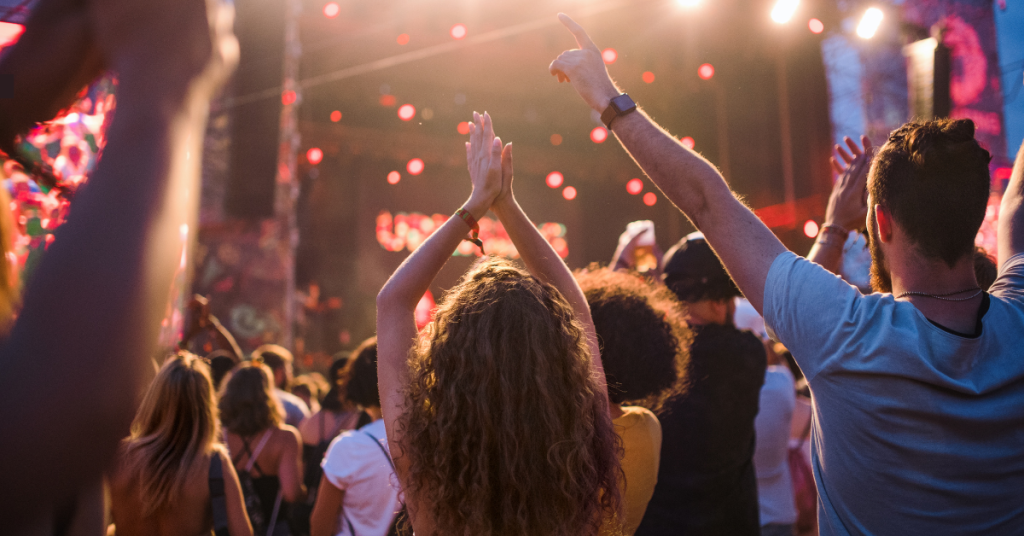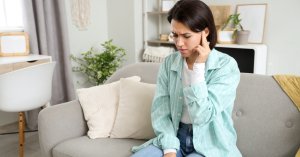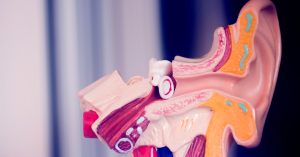Music is a universal language—one that stirs emotions, brings back memories, and even boosts our mood. But while it can be deeply therapeutic, it can also pose risks to our hearing health, especially depending on the genre and how it’s consumed. From the pounding beats of heavy metal to the subtle tones of classical strings, every style of music interacts with our ears in different ways.
For older adults and long-time music lovers, understanding how different genres affect hearing is crucial. Hearing loss can develop gradually and often goes unnoticed until it starts impacting daily life. With earbuds, headphones, and live concerts more accessible than ever, the way we experience music has changed—and so has the risk to our ears.
This article explores how various music genres can influence hearing health. We’ll break down how sound is processed by the ear, examine the risks associated with specific genres, and offer practical tips for protecting your hearing while still enjoying the music you love. Whether you’re a classical connoisseur or a heavy metal enthusiast, this guide will help you make safer listening choices without sacrificing your soundtrack.
Understanding How Music Affects the Ear
To understand how music genres impact hearing, it’s important to first understand how our ears process sound. Hearing begins when sound waves enter the ear canal and vibrate the eardrum. These vibrations then pass through the tiny bones in the middle ear and into the cochlea—a spiral-shaped organ filled with fluid and thousands of delicate hair cells.
These hair cells play a critical role. They convert mechanical vibrations into electrical signals that are sent to the brain, allowing us to perceive sound. However, they are also highly sensitive and, once damaged, they don’t regenerate. This means that exposure to loud or prolonged sound—regardless of genre—can lead to permanent hearing damage.
One of the most important factors affecting hearing health is volume, measured in decibels (dB). The World Health Organization recommends keeping sounds below 85 dB for safe listening over extended periods. Many genres, especially when played loudly through headphones or at concerts, can easily exceed this threshold. For reference, typical rock concerts can reach 100–120 dB, while earbuds at maximum volume often top out around 105 dB.
Frequency also matters. Higher-pitched sounds (measured in kilohertz) are more likely to damage the hair cells at the base of the cochlea. Different genres emphasize different frequencies, meaning some may pose a higher risk depending on how they’re produced and consumed. For example, heavy metal and EDM often involve sustained high volumes across a wide range of frequencies, while classical music might focus on mid to high frequencies but at typically lower volumes.
Finally, duration and proximity—how long and how close the sound source is to your ears—also contribute to risk. Listening to softer genres for long periods or louder ones even briefly but at close range (like with in-ear headphones) can both be harmful if precautions aren’t taken.
By understanding how the ear functions and what affects it, we can start to make informed choices about how and what we listen to. Next, we’ll explore how high-intensity genres like rock, metal, and electronic music stack up when it comes to hearing health.
The Loud Truth About Rock, Metal, and Electronic Music
If you’ve ever left a rock concert with your ears ringing, you’ve experienced firsthand how intense some music genres can be on your hearing. Rock, heavy metal, and electronic dance music (EDM) are known for their powerful, driving sounds—and often, for pushing volume levels to the extreme. While these genres can be electrifying and energizing, they also carry some of the highest risks for hearing damage when consumed without care.
Concerts for these genres frequently exceed 100 decibels, sometimes reaching up to 120 dB. That’s louder than a chainsaw or a jackhammer. According to hearing health experts, exposure to sound at 100 dB can start damaging your hearing in as little as 15 minutes. Prolonged exposure at these levels—whether at live events, clubs, or through personal listening devices—can lead to noise-induced hearing loss (NIHL) and tinnitus, a persistent ringing or buzzing in the ears.
What makes rock, metal, and EDM particularly risky is not just the volume, but the continuous and overlapping frequencies they often employ. Electric guitars, distorted basslines, synthesizers, and high-pitched cymbals all combine to create a sonic environment that bombards the ear with little rest. Unlike speech, which allows for natural pauses and quiet moments, these genres often feature relentless intensity, giving your ears little time to recover.
Additionally, fans of these genres often listen through in-ear monitors or earbuds, which can direct sound deep into the ear canal, increasing the risk of inner ear damage. Listening at maximum volume can expose the ears to over 100 dB of sound—levels that are unsafe even for short durations.
But it’s not all bad news. With the right precautions, fans of high-energy genres can still enjoy their music safely:
- Use earplugs at concerts, especially musician-grade plugs that reduce volume evenly without distorting the sound.
- Follow the 60/60 rule when using headphones: keep volume under 60% and limit listening to 60 minutes at a time.
- Take breaks during long listening sessions or loud events to give your ears time to recover.
- Use noise-cancelling headphones, which allow for lower volume levels by reducing background noise.
Rock, metal, and EDM may be loud by nature, but enjoying them doesn’t have to come at the cost of your hearing. Awareness and smart listening habits go a long way in preserving your ears for years to come.
Hip-Hop and Pop: Beat-Driven Genres and Their Impact
Hip-hop and pop dominate today’s music landscape, particularly among listeners who rely heavily on streaming platforms and personal audio devices. While these genres might not seem as abrasive as heavy metal or EDM, their influence on hearing health is significant—largely because of how, and how often, they are consumed.
Both hip-hop and pop music tend to emphasize bass-heavy beats and compressed dynamic ranges, which means there’s less variation between quiet and loud parts. This can lead to a constant level of high-volume exposure, especially when listeners crank up the volume to feel the beat more intensely. Bass, while often felt as much as heard, travels through the inner ear just like high frequencies, and excessive low-frequency sound can still fatigue or damage auditory pathways over time.
Unlike genres that are often enjoyed in specific environments (like concerts), pop and hip-hop are typically consumed on the go—via earbuds and headphones during workouts, commutes, or even while sleeping. This constant exposure, especially through in-ear devices, is a primary risk factor. Earbuds sit close to the eardrum, amplifying sound and reducing the natural buffering distance that over-the-ear headphones provide.
Research shows that younger generations—those who are more likely to listen to hip-hop and pop regularly—are already experiencing early signs of hearing damage due to frequent headphone use. However, older adults who adopt these listening habits, or who enjoy modern pop remixes with heavier bass and louder mastering, are equally at risk.
Another concern is volume normalization and compression used in streaming and radio platforms. Songs are mastered to sound consistently loud across different devices and settings. While this creates a uniform listening experience, it also reduces dynamic relief for your ears, keeping them constantly engaged and under stress.
To enjoy these genres safely, consider the following tips:
- Use volume-limiting settings on smartphones and streaming apps to prevent accidental exposure to damaging levels.
- Invest in quality headphones that offer good bass response at lower volumes, reducing the need to turn the music up.
- Take listening breaks, especially after long sessions with music that uses a lot of low-end frequencies.
- Be mindful of listening environments—in noisy settings like subways or buses, it’s tempting to increase volume, which can compound hearing risks.
Pop and hip-hop may not be inherently dangerous to hearing, but their modern delivery methods and production styles make them stealthier threats. Recognizing this can help listeners strike a balance between enjoyment and ear health.
Classical, Jazz, and Acoustic: Are Softer Sounds Safer?
It’s easy to assume that softer genres like classical, jazz, and acoustic music are inherently safe for your hearing. With their more subdued dynamics and frequent quiet passages, these styles certainly seem gentler on the ears. And while it’s true that these genres typically operate at lower volumes, they aren’t entirely risk-free—especially in certain listening environments and over extended periods.
Classical music, for example, is known for its wide dynamic range. A symphony may begin with a soft solo and crescendo into a full orchestral blast that exceeds 90–100 decibels. In concert halls or opera houses, these peaks can reach volumes that rival those of rock concerts, albeit for shorter durations. Over time, repeated exposure to these spikes can still affect sensitive inner ear structures, particularly in people with pre-existing hearing concerns.
Jazz, with its frequent use of brass instruments like trumpets and saxophones, can also produce sharp high-frequency bursts that stress the auditory system. Live jazz clubs often feature close quarters and amplified sound systems, creating echo and distortion that can lead to ear fatigue—especially if proper acoustic treatments aren’t in place.
Acoustic music generally offers the most naturally safe listening experience, especially when played live without amplification. However, even here, prolonged headphone use to stream soft music can cause chronic exposure issues if the volume is turned up to overcome background noise or if used for relaxation during sleep.
There’s also a false sense of security that comes with these genres. Because the music feels calming or therapeutic, listeners may overindulge—playing playlists for hours on end without taking breaks, particularly when using earbuds. Even moderate sounds, when sustained over long durations, can contribute to gradual hearing loss.
To safely enjoy classical, jazz, and acoustic music:
- Be aware of volume spikes in live performances and consider using high-fidelity earplugs if you’re seated close to the stage.
- Use over-ear headphones with good sound clarity for home listening, allowing you to hear details without cranking the volume.
- Limit continuous listening—give your ears regular breaks, even if the music is soft and soothing.
- Monitor your listening environments, especially if you use music to fall asleep. Set timers or use pillow speakers instead of earbuds.
Ultimately, while these genres pose fewer risks than louder styles, no music is completely safe if listened to excessively or improperly. Hearing protection isn’t just for rock concerts—it applies to all forms of sound exposure, no matter how refined the melody.
Safe Listening Habits Across All Music Genres
Regardless of whether you’re a fan of heavy metal, pop, jazz, or acoustic ballads, the most important factor in protecting your hearing is how you listen—not just what you listen to. Safe listening habits are essential for maintaining long-term hearing health, especially as we age or if we already experience some degree of hearing sensitivity.
One of the most widely recommended practices is the 60/60 rule: listen at no more than 60% of your device’s maximum volume for no longer than 60 minutes at a time. This guideline helps prevent overexposure to sound, especially when using personal audio devices like smartphones and headphones. Many people unknowingly listen at dangerously high volumes, particularly in noisy environments where they try to drown out background sounds.
Choosing the right headphones also makes a big difference. Over-ear, noise-canceling headphones are generally safer than earbuds. They provide better sound quality at lower volumes and block out external noise, reducing the temptation to increase volume. Avoid using earbuds in loud settings like public transit, where people often turn up the music just to hear it.
Hearing breaks are equally important. Our ears need time to recover after prolonged exposure to sound. Take a 5–10 minute break every hour, especially if you’re at a live event or listening through headphones for extended periods. This small step can significantly reduce the risk of auditory fatigue and long-term damage.
When attending concerts or live performances, wearing earplugs is one of the best things you can do for your hearing. Modern high-fidelity earplugs are designed to reduce volume without distorting the sound, so you can still enjoy the music clearly while protecting your ears. Keep a pair handy in your bag or pocket—they’re especially useful at venues where volume levels are beyond your control.
It’s also wise to monitor your hearing over time. If you notice symptoms like ringing (tinnitus), difficulty understanding speech in noisy places, or needing to increase the volume on your devices more often, these could be early signs of hearing loss. Speak with a hearing care professional about getting a baseline hearing test and checking your hearing health regularly.
Lastly, make use of built-in safety features on your devices. Many smartphones and music platforms now offer volume alerts, sound exposure tracking, and customizable limits. Enabling these tools can help you stay within safe listening thresholds without having to constantly monitor levels manually.
In the end, it’s not about avoiding music—it’s about enjoying it responsibly. By developing safe listening habits across all music genres, you can protect your ears while still experiencing the joy, emotion, and energy that music brings to life.
Conclusion
Music is one of life’s greatest pleasures, offering comfort, inspiration, and connection across generations and cultures. Whether you’re a fan of thumping bass lines, soaring guitar solos, smooth jazz, or gentle acoustic melodies, music plays a vital role in emotional and social well-being. But as this article has shown, the genres we enjoy—and how we engage with them—can have a profound impact on our hearing health.
From the intense decibel levels of rock and EDM to the sustained headphone use common with pop and hip-hop, and even the surprising risks of dynamic classical performances, no genre is entirely without potential harm. However, hearing loss isn’t inevitable. By understanding how sound affects the ears and adopting smart listening habits, music lovers of all kinds can continue to enjoy their favorite tracks without sacrificing their hearing.
The key takeaway is this: volume, duration, and proximity matter more than the genre itself. With the right tools—like noise-canceling headphones, musician-grade earplugs, and listening time limits—you can minimize your risk of hearing damage no matter your musical taste.
Ultimately, preserving your hearing ensures that you can enjoy music for a lifetime. So turn it up—just not too loud—and make hearing health part of your overall wellness journey.
FAQ
Can listening to music really damage your hearing?
Yes, prolonged exposure to loud music—especially over 85 decibels—can lead to noise-induced hearing loss. The risk increases with higher volume, longer listening duration, and use of earbuds or headphones that deliver sound directly into the ear canal.
Are some music genres more harmful to your ears than others?
Not inherently, but genres like rock, metal, and EDM are often played at higher volumes and in louder environments, increasing the risk. However, any genre can pose a risk if listened to at unsafe volumes or for extended periods without breaks.
Is classical music safe for hearing health?
While generally perceived as soft, classical music can have sudden loud passages, especially in live performances. These spikes can reach damaging levels if you’re seated close to the orchestra or listen at high volumes with headphones.
What are signs of music-related hearing damage?
Early signs include a ringing or buzzing in the ears (tinnitus), muffled sounds, or difficulty understanding speech in noisy environments. If you experience these symptoms, it’s important to consult a hearing professional.
How can I protect my hearing and still enjoy music?
Follow safe listening habits: keep the volume below 60% of the maximum, limit listening time, take breaks, and use high-quality headphones or musician-grade earplugs at concerts. Monitoring your hearing regularly can also help catch problems early.
“This article is for informational purposes only and is not a substitute for professional medical advice, diagnosis, or treatment. If you are concerned about your hearing or ear health, please consult a qualified healthcare provider.”






